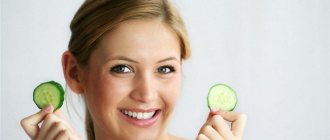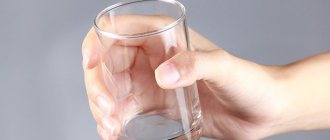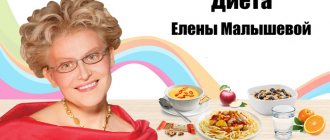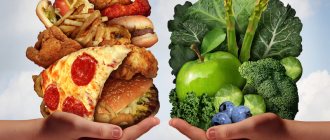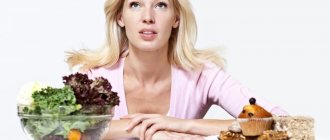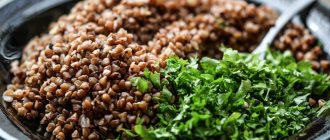What diet do gymnasts go on? We have all repeatedly admired the excellent figures of girls doing rhythmic gymnastics and reminiscent of ballerinas. Of course, such graceful forms can only be achieved by training hard and devoting all your free time to your favorite and so beautiful sport. However, there is a diet for gymnasts, the menu of which is quite varied. Thanks to a special diet, they always manage to look great, feel good and easy, and at the same time have a lot of strength and energy for physical activity.
General rules
Sports, and even more so rhythmic gymnastics, is a very beautiful sport, but in order for everything to look highly aesthetically pleasing and at its best, you need to put in a lot of effort. A gymnast’s diet is primarily aimed at maintaining health, increasing tone, and fully restoring strength after grueling training. A huge charge of energy should come already, starting with the first meal - breakfast. Gymnasts’ training lasts 5-8 hours or is divided into several, this, of course, allows you to make your figure as feminine and athletic as possible, but in order to withstand this you need healthy food and sleep.
Contraindications for the diet
- The diet for gymnasts is quite strict, so it is not recommended to switch to it immediately from a nutritious diet - a sudden change in diet is fraught with stress for the body.
- This kind of unloading is good for intense training. If you have a sedentary job or a sedentary lifestyle, you should begin to practice this nutrition system gradually, getting used to strict restrictions.
- A diet based on buckwheat and green tea, as recommended by Irina Viner, can cause undesirable consequences: green tea affects blood pressure. Therefore, you should independently master the recommended diet, selecting individual nutrition options.
Authorized Products
A coach for gymnasts and gymnasts is a real mentor; from the first day of professional sports, children fall under the strict control of specialists who tell them what to eat. The diet of gymnasts is usually based on:
- fresh plant products - fruits, berries, vegetables, herbs;
- protein foods - dietary meats, fish, dairy products;
- healthy drinks - fresh juices, natural still water (usually with lemon and honey in the morning), herbal teas and rosehip infusions.
Table of permitted products
| Proteins, g | Fats, g | Carbohydrates, g | Calories, kcal | |
Vegetables and greens | ||||
| green peas | 5,0 | 0,2 | 13,8 | 73 |
| broccoli | 3,0 | 0,4 | 5,2 | 28 |
| Brussels sprouts | 4,8 | 0,0 | 8,0 | 43 |
| boiled cauliflower | 1,8 | 0,3 | 4,0 | 29 |
| leek | 2,0 | 0,0 | 8,2 | 33 |
| carrot | 1,3 | 0,1 | 6,9 | 32 |
| cucumbers | 0,8 | 0,1 | 2,8 | 15 |
| parsley | 3,7 | 0,4 | 7,6 | 47 |
| radish | 1,2 | 0,1 | 3,4 | 19 |
| salad | 1,2 | 0,3 | 1,3 | 12 |
| beet | 1,5 | 0,1 | 8,8 | 40 |
| tomatoes | 0,6 | 0,2 | 4,2 | 20 |
| zucchini | 1,5 | 0,2 | 3,0 | 16 |
Fruits | ||||
| avocado | 2,0 | 20,0 | 7,4 | 208 |
| oranges | 0,9 | 0,2 | 8,1 | 36 |
| pears | 0,4 | 0,3 | 10,9 | 42 |
| lime | 0,9 | 0,1 | 3,0 | 16 |
| lemons | 0,9 | 0,1 | 3,0 | 16 |
| apples | 0,4 | 0,4 | 9,8 | 47 |
Berries | ||||
| blueberry | 1,0 | 0,0 | 8,2 | 35 |
| raspberries | 0,8 | 0,5 | 8,3 | 46 |
| rose hip | 1,6 | 0,0 | 14,0 | 51 |
Nuts and dried fruits | ||||
| walnuts | 15,2 | 65,2 | 7,0 | 654 |
| raisin | 2,9 | 0,6 | 66,0 | 264 |
| dried figs | 3,1 | 0,8 | 57,9 | 257 |
| roasted cashews | 17,5 | 42,2 | 30,5 | 572 |
| dried apricots | 5,2 | 0,3 | 51,0 | 215 |
| hazelnut | 16,1 | 66,9 | 9,9 | 704 |
| prunes | 2,3 | 0,7 | 57,5 | 231 |
| dried apples | 2,2 | 0,1 | 59,0 | 231 |
Cereals and porridges | ||||
| buckwheat | 4,5 | 2,3 | 25,0 | 132 |
| oatmeal with water | 3,0 | 1,7 | 15,0 | 88 |
| pearl barley porridge | 3,1 | 0,4 | 22,2 | 109 |
| brown rice | 7,4 | 1,8 | 72,9 | 337 |
| brown rice | 6,3 | 4,4 | 65,1 | 331 |
Bakery products | ||||
| oatmeal bread | 10,1 | 5,4 | 49,0 | 289 |
| Rye bread | 6,6 | 1,2 | 34,2 | 165 |
| whole grain bread | 10,1 | 2,3 | 57,1 | 295 |
Raw materials and seasonings | ||||
| honey | 0,8 | 0,0 | 81,5 | 329 |
| fresh mint | 3,7 | 0,4 | 8,0 | 49 |
Dairy | ||||
| kefir 0% | 3,0 | 0,1 | 3,8 | 30 |
| natural yogurt 2% | 4,3 | 2,0 | 6,2 | 60 |
Cheeses and cottage cheese | ||||
| Adyghe cheese | 18,5 | 14,0 | 0,0 | 240 |
| Chees Feta | 17,0 | 24,0 | 0,0 | 290 |
| cottage cheese 0% (low fat) | 16,5 | 0,0 | 1,3 | 71 |
Meat products | ||||
| boiled beef | 25,8 | 16,8 | 0,0 | 254 |
| veal | 19,7 | 1,2 | 0,0 | 90 |
| ham | 22,6 | 20,9 | 0,0 | 279 |
| liver pate | 11,6 | 28,9 | 2,5 | 317 |
| chicken cutlets | 18,2 | 10,4 | 13,8 | 222 |
Bird | ||||
| boiled chicken breast | 29,8 | 1,8 | 0,5 | 137 |
Eggs | ||||
| omelette | 9,6 | 15,4 | 1,9 | 184 |
| boiled chicken eggs in a bag | 12,7 | 11,5 | 0,7 | 157 |
Fish and seafood | ||||
| squid | 21,2 | 2,8 | 2,0 | 122 |
| boiled shrimp | 18,9 | 2,2 | 0,0 | 95 |
| seafood | 15,5 | 1,0 | 0,1 | 85 |
| lightly salted trout | 20,6 | 10,1 | — | 186 |
Oils and fats | ||||
| butter | 0,5 | 82,5 | 0,8 | 748 |
| olive oil | 0,0 | 99,8 | 0,0 | 898 |
Juices and compotes | ||||
| Orange juice | 0,9 | 0,2 | 8,1 | 36 |
| cranberry juice | 0,4 | 0,3 | 11,0 | 46 |
| apple compote | 0,2 | 0,0 | 22,1 | 85 |
| * data is per 100 g of product | ||||
Menu for the day
Sample menu for one day for gymnasts:
| Breakfast | Oatmeal, boiled in water with the addition of dried fruits, low-fat yogurt, toast, cheese. |
| Lunch | Vegetable or fruit salad. |
| Dinner | Cereal or vegetable soup, boiled chicken, freshly squeezed juice. |
| Dinner | Low-fat fish with a side dish of green beans, green tea. |
Fully or partially limited products
The diet of gymnasts is, first of all, a healthy, balanced menu; there is no place for “harmful foods” in it:
- All sweets - candies, cakes, ice cream, bars, all this is not allowed, only sometimes you can treat yourself to a piece of dark dark chocolate or natural fruit marmalade.
- Products with preservatives, dyes, flavor enhancers. For example, canned food, semi-finished products, sauces and other packaged modern snacks, including cottage cheese desserts, yoghurts with fillings.
- Alcoholic, sweet and carbonated drinks.
- Pickles, salty snacks for beer - nuts, fish, which lead to fluid and water retention and unnecessary excess weight, this is a direct hindrance when performing tricks.
- Animal fats and fatty meats, such as pork, lamb, legs.
- Flour and pasta products made from premium white flour.
In addition, you need to completely abandon high-calorie and starchy potatoes, bananas and grapes.
Table of prohibited products
| Proteins, g | Fats, g | Carbohydrates, g | Calories, kcal | |
Vegetables and greens | ||||
| fried zucchini | 1,1 | 6,0 | 6,7 | 88 |
| canned capers | 2,4 | 0,9 | 1,7 | 24 |
| potato | 2,0 | 0,4 | 18,1 | 80 |
| sun-dried tomatoes | 14,1 | 3,0 | 43,5 | 258 |
| canned tomatoes | 1,1 | 0,1 | 3,5 | 20 |
Fruits | ||||
| bananas | 1,5 | 0,2 | 21,8 | 95 |
Berries | ||||
| grape | 0,6 | 0,2 | 16,8 | 65 |
Snacks | ||||
| potato chips | 5,5 | 30,0 | 53,0 | 520 |
| caramel popcorn | 5,3 | 8,7 | 76,1 | 401 |
| salted popcorn | 7,3 | 13,5 | 62,7 | 407 |
Flour and pasta | ||||
| premium wheat flour | 10,3 | 1,1 | 68,9 | 334 |
| egg pasta | 11,3 | 2,1 | 68,0 | 345 |
| spaghetti | 10,4 | 1,1 | 71,5 | 344 |
| vareniki | 7,6 | 2,3 | 18,7 | 155 |
| dumplings | 11,9 | 12,4 | 29,0 | 275 |
Bakery products | ||||
| loaf | 7,5 | 2,9 | 50,9 | 264 |
| buns | 7,2 | 6,2 | 51,0 | 317 |
| kalach | 7,9 | 0,8 | 51,6 | 249 |
| pita | 7,4 | 0,8 | 49,9 | 242 |
Confectionery | ||||
| candies | 4,3 | 19,8 | 67,5 | 453 |
| cookie | 7,5 | 11,8 | 74,9 | 417 |
| cake | 3,8 | 22,6 | 47,0 | 397 |
| gingerbread | 5,8 | 6,5 | 71,6 | 364 |
| dough | 7,9 | 1,4 | 50,6 | 234 |
Ice cream | ||||
| ice cream sundae | 3,2 | 15,0 | 20,8 | 227 |
| ice cream | 3,3 | 10,0 | 19,8 | 179 |
| popsicle ice cream | 3,5 | 20,0 | 19,6 | 270 |
Cakes | ||||
| cake | 4,4 | 23,4 | 45,2 | 407 |
| banquet cake | 3,9 | 19,5 | 45,3 | 367 |
| Napoleon cake | 6,4 | 42,2 | 38,7 | 558 |
Raw materials and seasonings | ||||
| ketchup | 1,8 | 1,0 | 22,2 | 93 |
| potato starch | 0,1 | 0,0 | 79,6 | 300 |
| mayonnaise | 2,4 | 67,0 | 3,9 | 627 |
| sugar | 0,0 | 0,0 | 99,7 | 398 |
| curry sauce | 1,4 | 23,1 | 14,9 | 267 |
Meat products | ||||
| pork | 16,0 | 21,6 | 0,0 | 259 |
| pig meat | 20,6 | 3,0 | 0,0 | 109 |
| jamon | 34,8 | 16,1 | 1,3 | 241 |
| pork stew | 13,0 | 35,0 | 0,0 | 367 |
Sausages | ||||
| boiled sausage | 13,7 | 22,8 | 0,0 | 260 |
| smoked salami sausage | 12,0 | 50,0 | 0,0 | 498 |
| brawn sausage | 11,3 | 28,4 | 0,3 | 340 |
| sausages | 12,3 | 25,3 | 0,0 | 277 |
Fish and seafood | ||||
| dried yellow minke whale | 50,0 | 7,5 | 0,0 | 267 |
| hot smoked herring | 21,8 | 14,3 | — | 215 |
| salted mackerel | 18,5 | 25,1 | 0,0 | 305 |
Oils and fats | ||||
| creamy margarine | 0,5 | 82,0 | 0,0 | 745 |
| vegetable-fat spread | 0,0 | 40,0 | 0,0 | 360 |
| animal fat | 0,0 | 99,7 | 0,0 | 897 |
Alcoholic drinks | ||||
| vermouth | 0,0 | 0,0 | 15,9 | 158 |
| vodka | 0,0 | 0,0 | 0,1 | 235 |
| cognac | 0,0 | 0,0 | 0,1 | 239 |
| beer | 0,3 | 0,0 | 4,6 | 42 |
| * data is per 100 g of product | ||||
ASPECTS OF NUTRITION FOR GYMNASTS, ACROBATS article on physical education on the topic
ASPECTS OF NUTRITION FOR GYMNASTS AND ACROBATS
Ozerov G.L.
Errors in the nutrition of athletes are not immediately noticeable, and therefore athletes and coaches pay almost no attention to them. In everyday life, gymnasts are guided mainly by established habits or recommendations of a coach. Meanwhile, not all athletes are aware of the gradual and inevitably destructive effects of poor nutrition on the body. As a rule, interest in nutrition problems among gymnasts and coaches arises in connection with the need to regulate body weight through diet, while other possibilities for the targeted use of diets remain outside their field of vision. Within the framework of this article, I would like to clarify issues of interest for maintaining the health and ensuring high performance of athletes.
It is known that the basis of the body’s vital activity are the processes of converting food into the energy of physiological functions, into the structures of the human body. At the same time, it is not indifferent to what quality and quantity the body receives food resources. It is also important that this energy is completely consumed, i.e. the biological processes of absorption and excretion must balance each other. In short, if 2800 kcal of energy is obtained from food, then the same amount should be expended. But here's a paradox! By reducing the intake of nutrients into the body by 10 - 15 percent and leaving energy expenditure the same, it is possible to increase the effectiveness of a gymnast’s training, since in this case nutrients are better absorbed. It is advisable to use this technique in the preparatory period of training for 7 - 10 days, repeating it periodically. In this regard, it is a good idea to develop the valuable habit of chewing your food slowly and thoroughly. Thus, processed food transfers 2 times more nutrients to the body than during normal consumption. It should be noted that “raw foodists” (people who accept only raw food), as well as Indian yogis, eat this way.
How important it is to take into account the qualitative composition of a gymnast’s diet is evidenced by the very frequent deficiency of essential nutrients in his diet. Even at training camps, when analyzing the diet of gymnasts, a lack of mineral salts, vitamins, vegetable fats, and proteins is discovered.
Most often, gymnasts ignore cereals, bread, potatoes, vegetables, giving preference to meat, fish, cottage cheese, i.e. protein products necessary as plastic material for the structural construction of tissues, to increase muscle strength during training. Meanwhile, plant products contain proteins that differ in their amino acid composition from animal proteins. Therefore, both of them should be reasonably combined in food. For example, milk goes well with bread, noodles, and porridge; meat - with vegetables, cottage cheese - with potatoes, etc. The daily diet should include approximately equal amounts of animal and vegetable proteins. At the same time, the passion for excessive consumption of animal proteins, especially from meat products, is not indifferent to the body, which, along with meat food, receives many extractive (flavoring and aromatic) substances that cause intestinal putrefaction and poison the body. Along with this, food poor in vegetables, herbs, fruits, berries, and lactic acid products can lead to disturbances in the motor activity of the stomach and intestines. These examples illustrate the need to continually monitor dietary diversity to ensure that all essential nutrients are represented. If some products are missing from the assortment, they can be replaced with others without noticeably distorting the chemical composition of the food and preserving its biological value.
Gymnasts are also quite careless about their diet, eating quickly, at different times, as necessary. At training camps, these shortcomings are easier to eliminate. For an athlete, a proper diet means not only regular meals at certain intervals, but also the correct distribution of food by calorie content throughout the day, depending on training sessions in the first or second half of the day, or with two workouts a day. You should be especially careful about eating in the evening, excluding meat, fish, beans, peas, i.e., foods rich in protein, from your diet. It lingers longer in the stomach and requires increased secretion of digestive juices. In the evening, you should not eat spicy foods, strong tea, or coffee, which have a stimulating effect on the body. It is best to eat porridge, cottage cheese, a vegetable dish, drink a glass of milk, kefir or weak tea.
Eating a lot at one time is harmful: if the stomach is often full, the muscles of its walls can persistently stretch and not contract in the future; it is very difficult to deal with this. On the other hand, it is harmful to eat too little, as the tone of the intestinal muscles may decrease, its motor activity will worsen, and constipation and other intestinal disorders may begin. It is quite obvious that every gymnast and acrobat must adhere to a strictly established nutritional rhythm and not violate it.
Typical nutritional mistakes among athletes include attempts by gymnasts and acrobats to maintain slimness through diet. Extra pounds hinder the further growth of the skills of many athletes, which is the reason for the cessation of active gymnastics or acrobatics at the age of 15 - 16 years. Athletes often encouraged by a coach resort to self-restraint in nutrition, deprive themselves of side dishes, bread and potatoes, sugar, butter, liquids, violate their diet - they eat only 1-2 times a day and this position is unacceptable. It is possible to regulate body weight with the help of diet even with the usual rhythm of nutrition inherent in every athlete. What is important is reasonable restriction so that the body is not deprived of vital nutrients. This, in turn, will prolong the athletic longevity of the gymnast and acrobat.
It would seem that overeating is not typical for gymnasts who have learned to limit themselves in food. However, this is often where the main danger to the figure lies. We have already talked about the bad habit of female athletes to eat 1-2 times a day. As a consequence of such nutrition, all types of metabolism are disrupted, and therefore their appetite sharply increases, and when they sit down at the table after a long break, gymnasts eat quickly, with “greed” and inevitably overeat. For the habit of eating heavily after evening workouts, you have to pay with a load of extra pounds and decreased performance. True, the body weight of a training athlete can increase when he eats no more than normal, but preferably fatty or carbohydrate foods (porridge, bread, sweets) and clearly does not consume enough protein components (cottage cheese, fish, meat). As a rule, food rich in carbohydrates activates the activity of the pancreas, which secretes an excess amount of insulin, and this contributes to the conversion of carbohydrates into fats, increasing their deposition in the body. Obviously, only with skillful adjustments to your diet, cultivating a sense of moderation in food, can you develop healthy habits at the table and maintain a high level of fitness.
At the same time, we must remember that extremes can often arise in the nutrition of athletes, due to the manifestation of interest in new and old, but quite original and viable forms of nutrition: vegetarianism, raw food diet, separate intake of food products. It seems that they are unacceptable for athletes, if only because with such nutrition it is necessary to observe the principle of balancing the main nutrients in the diet, which is practically impossible to solve. In addition, switching to any new diet can “take by surprise” the body’s biochemical systems, lead to a deficiency of enzymes configured to process food, and cause digestive disorders. Along with this, one cannot, for example, consider the recommendations of vegetarians to be true. They require careful testing based on in-depth experimental research, especially in sports practice, despite the vast experience accumulated by representatives of this direction in nutrition.
Thus, the success of a gymnast’s sports activity largely depends on nutrition, in which there should be no mistakes, just as there should be no mistakes on the gymnastics platform. We have the right to consider nutrition as part of medical control and therefore should pay daily attention to it.
Diet menu for gymnasts (Meal plan)
An example of a healthy diet menu for gymnasts for a week
Mon
| Breakfast |
|
| Lunch (12:00) |
|
| Dinner |
|
| Dinner |
|
W
| Breakfast |
|
| Lunch (12:00) |
|
| Dinner |
|
| Dinner |
|
Wed
| Breakfast |
|
| Lunch (12:00) |
|
| Dinner |
|
| Dinner |
|
Thu
| Breakfast |
|
| Lunch (12:00) |
|
| Dinner |
|
| Dinner |
|
Fri
| Breakfast |
|
| Lunch (12:00) |
|
| Dinner |
|
| Dinner |
|
Sat (fasting day)
| Breakfast |
|
| Lunch (12:00) |
|
| Dinner |
|
| Dinner |
|
Sun
| Breakfast |
|
| Lunch (12:00) |
|
| Dinner |
|
| Dinner |
|
Diet menu for 2 days
First day
| Breakfast |
|
| Dinner |
|
| Afternoon snack |
|
| Dinner |
|
Second day
| Breakfast |
|
| Dinner |
|
| Afternoon snack |
|
| Dinner |
|
Nutrition
Gymnasts’ nutrition must be constantly monitored
To easily perform all gymnastic elements, it is important to have not only ideal parameters, but also developed muscles. To ensure that all consumed substances go into energy and muscle corset, the nutrition of female athletes is prepared in a special way.
The menu should include a large amount of vitamins and minerals so that all body systems work normally.
Nutrition is prepared taking into account the training process. On a day off you can eat three times, on a training day the number of meals increases to four. If 2 workouts are planned per day, then you need to eat five times. Serving size should not exceed 250 g.
Once or twice a week - fasting. These days, daily caloric intake is reduced by almost half. Preference is given to dishes made from vegetables - cabbage, pumpkin, tomatoes or celery.
The title of MS and above requires constant adherence to a diet, because every kilogram affects the result.
The menu should always be dominated by vegetables, most of which should be cabbage. Complex carbohydrates are allowed only for breakfast, and proteins are allowed for lunch and dinner.
At the same time, female athletes should eat healthy and high-quality food. Such proper nutrition excludes all semi-finished products containing dyes and additives. In the morning you can treat yourself to dark chocolate or quality marmalade. The title of MS and above requires constant adherence to a diet, because every kilogram affects the result.
Recipes
Dietary cottage cheese casserole
Take 0.5 kg of low-fat grainy or soft cottage cheese, one chicken egg and 3 tbsp. semolina.
Mix the ingredients, add raisins, dried apricots and other dried or candied fruits at your discretion. Place the resulting curd mass in a mold and bake for 30-40 minutes at 180 degrees in the oven.
Cabbage casserole
A very healthy dietary dish that can be varied due to a large number of varieties and types of cabbage: white, red, cauliflower, Brussels sprouts, Savoy, broccoli, etc. They are all useful in their own way and necessary for our body. Preparing the casserole is very simple: take 0.5 kg of cabbage, boil it in lightly salted water. Beat one egg with a whisk.
Place the cabbage on a baking sheet or in a mold, pour in the egg mixture. Place in the oven to bake for 20 minutes, 180 degrees. Serve the casserole sprinkled with chopped herbs - dill, parsley, watercress.
Tips that also apply to other sports
There are several universal tips that are suitable for both rhythmic gymnastics and any other sport.
Constantly monitor the child’s health, undergo medical examinations at the slightest complaint. Especially in the period from 3 to 7 years, when the body is still poorly formed. Teach your child to take criticism sensibly and respect competitors. After the first ups, the downs seem especially monstrous. Pay attention to the coach.
You and the child must trust him completely in order to fully open up. It is very important that the coach is suitable for you. Look at what he has achieved, where he studied and what teaching methods he chooses
Former elite athletes are often more demanding than average amateur coaches, but many of them have the skills to help develop a champion. Sometimes even a simple trainer can do this.
If a child asks to switch to another coach, it is worth doing so. There can be no compromises in this sport. If an athlete can no longer open up to this coach, then she will not be able to develop.
Advantages and disadvantages
| pros | Minuses |
|
|
Diet of gymnasts
- The diet should be designed so that when consuming low-calorie foods, weight remains unchanged and muscle mass is maintained at the proper level.
- Protein first. To maintain muscle mass and not store fat, you should eat foods rich in protein. These are: meat, fish, legumes, cottage cheese, milk.
- Fried, smoked, flour and sweet foods are excluded.
- The only desserts allowed are dark chocolate (it promotes energy metabolism), natural marmalade and dried fruits.
- Meals are fractional, small portions of food several times a day allow food to be digested quickly.
- Compliance with diet. The timing of your meals is very important for exercise. Eating should take place no later than 2 hours before training.
Some young gymnasts admit that they often break the rules and eat forbidden foods. However, excess calories are burned very quickly during intense training.
Reviews and results
On forums and various women's magazines you can find many reviews and discussions about the diet of gymnasts. They question whether professional Olympic gymnasts eat such a diet, but admit that such a diet is excellent for athletes:
- Anya, 25 years old: “... It seemed to me that gymnasts have a super strict diet, but, as it turned out, sticking to the menu is not difficult, in a week of diet I lost 2.5 kg.”
- Katerina, 28 years old: “... I like that, despite the restrictions, food gives a huge boost of energy, this is important for me - I don’t lose performance and the weight goes off, I lost 3.5 kg in a month, with my original 55 kg.”
- Lena, 39 years old: “... The menu is balanced, varied and tasty, I went on a diet until I reached my planned 65 kg, which is minus 20 kg in 5 months.”
Rhythmic gymnastics technology: video
The diet of gymnasts is more varied than the menu of ballerinas. The basis of nutrition for rhythmic gymnastics athletes is protein food. It helps build muscles, without which exercise is impossible.
The diet will allow everyone who wants to get rid of excess weight, however, without physical activity it will not make any sense. When you combine such nutrition with intense training, you can quickly get remarkable results, improve your figure, and strengthen your muscles.
To avoid overdoing it and harming your health, you should consult a specialist or enlist the support of a fitness trainer. If the gymnasts’ nutrition system is ideal for you, you can write out the menu for several days in advance and follow the recommendations that the professionals talk about.
Adviсe
- Weigh yourself regularly—preferably every day in the morning or once a week on an empty stomach.
- Fasting days - 1 or 2 must be done every week.
- Give preference to vegetable rather than fruit juices.
- You need to eat up to 600 g of vegetables per day, 50% of which is white cabbage.
- Carbohydrate foods for breakfast (toast, cereal), protein foods for lunch.
- A glass of low-fat kefir before bed will help support the intestinal microflora.
- Keep track of the portion sizes you eat, ideally weigh them on a kitchen scale, keep a food diary, and be sure to note a positive trend in weight loss.
Diet from Irina Viner
President of the All-Russian Rhythmic Gymnastics Federation Irina Viner recommends fasting days on buckwheat and green tea. Such a diet, according to the famous trainer, allows you to quickly and effectively lose excess weight.
The recommended daily diet is as follows:
- for breakfast, buckwheat porridge (the cereal is poured with boiling water and after two hours it is ready to eat);
- Drink 2-3 liters of green tea during the day;
- after 18 hours - do not drink or eat anything.
The diet is designed for 3 days and promises weight loss from 3 to 5 kg.
Many followers of Irina Viner received high-quality results on a similar diet.


